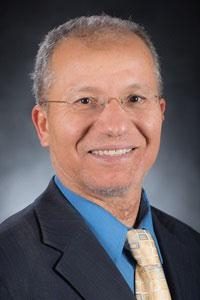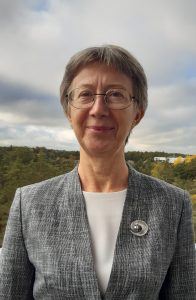 Prof. Mohsen Guizani
Prof. Mohsen Guizani
Title: IoT Security Schemes for Healthcare Systems
Bio:
Mohsen Guizani (S’85–M’89–SM’99–F’09) received the B.S. (with distinction) and M.S. degrees in electrical engineering, the M.S. and Ph.D. degrees in computer engineering from Syracuse University, Syracuse, NY, USA, in 1984, 1986, 1987, and 1990, respectively. He is currently a Professor at the Computer Science and Engineering Department in Qatar University, Qatar. Previously, he served in different academic and administrative positions at the University of Idaho, Western Michigan University, University of West Florida, University of Missouri-Kansas City, University of Colorado-Boulder, and Syracuse University. His research interests include wireless communications and mobile computing, computer networks, mobile cloud computing, security, and smart grid. He is currently the Editor-in-Chief of the IEEE Network Magazine, serves on the editorial boards of several international technical journals and the Founder and Editor-in-Chief of Wireless Communications and Mobile Computing journal (Wiley). He is the author of nine books and more than 600 publications in refereed journals and conferences. He guest edited a number of special issues in IEEE journals and magazines. He also served as a member, Chair, and General Chair of a number of international conferences. Throughout his career, he received three teaching awards and four research awards. He also received the 2017 IEEE Communications Society WTC Recognition Award as well as the 2018 AdHoc Technical Committee Recognition Award for his contribution to outstanding research in wireless communications and Ad-Hoc Sensor networks. He was the Chair of the IEEE Communications Society Wireless Technical Committee and the Chair of the TAOS Technical Committee. He served as the IEEE Computer Society Distinguished Speaker and is currently the IEEE ComSoc Distinguished Lecturer. He is a Fellow of IEEE and a Senior Member of ACM.
Abstract:
Internet of Things (IoT) is transforming our society and daily lives by connecting the world. This is expected to fundamentally transform industry, business, transportation and healthcare. However, this ubiquitous connection brings with it many challenges that range from security, scalability, data analytics, to device-level protocols. It is estimated that there will be hundreds of billions of IoT devices that need to be connected in the next few years. In addition, more than half of the world’s population live in cities, many with multiple devices that need to be connected to the Internet. This is expected to create a complex infrastructure. These smart services rely on computation and communication resources. Furthermore, being able to provide adequate services using these complex systems present enormous challenges.
In this Keynote, we review the current efforts by experts around the world to mitigate some of these challenges. Then, we showcase our research activities to contribute to these efforts and advocate possible solutions using AI and other tools. We provide ways on how to manage the available resources intelligently and efficiently in order to offer better living conditions and provide better services. Finally, we discuss some of our research results to support a variety of applications including how to secure these devices for successful healthcare service delivery in different aspects.
Helena Gapeyeva MD, PhD
Title: Movement analysis in Physical and Rehabilitation Medicine: Data monitoring
Bio:
Helena Gapeyeva MD, PhD graduated from the University of Tartu at which she received a Diploma cum laude from the Faculty of Medicine, Department of Sports Medicine in 1982, and later, in 2002, her PhD degree at the Faculty of Exercise and Sports Sciences. Dr Gapeyeva previously worked as a researcher in kinesiology at the University of Tartu, Laboratory of Biomechanics (1982-2019), currently she works as a Physician of Physical and Medical Rehabilitation at Clinic of Medical Rehabilitation
in East Tallinn Central Hospital, Tallinn, Estonia. She has participated in multiple grants such as grants of Ministry of Education of Estonia, Estonian Science Foundation, Estonian Ministry of Defence, Ministry of Foreign Affairs of Italy, European Union, and EUREKA Eurostars Programme project and EU FP7 Project HEALTH-2007-2.4.5-10. Moreover, Dr Gapeyeva is a member of different scientific societies including International Society of Physical and Rehabilitation Medicine (ISPRM), European Society of Physical and rehabilitation Medicine (ESPRM), European Society for Movement Analysis in Adults and Children (ESMAC).
From the research perspective, she focuses on Biomechanics of Movements, Neuromuscular Performance, Physical Medicine and Rehabilitation, Ageing, Orthopaedics and Traumatology: Pre- and Postoperative Function of Neuromuscular System; Adaptation of Neuromuscular System to Physical Training, Work-Related Musculoskeletal System Problems. Dr Gapeyeva is an author of 84 publications plus 3 in International per-reviewed journals.
Abstract:
Multidisciplinar team participates in the longitudinal process of rehabilitation of patient, suffering from different diseases: physician, nurses, physiotherapists, occupational therapists, masseures, prosthetists, lymph therapists, caregivers, speech specialists and psychologists. Main areas of medical rehabilitation are neurologic, orthopaedic, rheumatologic, cardiologic and post-amputation rehabilitation, sports medicine. For estimation of human movement different types of sensors are applied: wearable, environment-embedded and implanted. Several movement analysis systems provide data monitoring – with reflective markers, markerless systems, wireless accelerometers. Most objective information to identify and analyse walking, posture or movement problems, including kinematic and kinetic data are monitored by instrumented gait and movement analysis systems. The digital synchronisation of infrared cameras, force plates embedded in walkway and video caption helps to simultaneously search and compare the patient’s pattern of movement of body segments and power distribution during different phases of motion. Instrumented gait and movement analysis is provided by two types of hardware – with floor-embedded force plates or moving belt (uni- or dual-belt) embedded force plates. There are also two kinds of environment-related options: with moving or fixed environment. The environment-embedded moving system gives additional possibilities to study human body motion on a higher, more complex level as compared to fixed systems. New opportunity for dual-task specific training are open with virtual and augmented reality – to train gait or movement adaptability by projecting stepping targets, obstacles, or moving objects on the walking surface or display and to add cognitive elements and to give the feedback to patient. Unification of data monitoring including standard software protocols is the best way to exchange the information between different hospitals and research institutions. Previously it has been supposed to build an on-line database for monitored data, but future studies need the in-network processing and security aspects for this aim.
Keywords: movement analysis, gait analysis, kinematic and kinetic characteristics, force plates, sensors, dual-belt embedded force plates, medical rehabilitation

